Fighting in the Wehlau in January 1945
In continuation of the study of the situation that developed during the East Prussian operation in the city of Wehlau, we offer a translation of a chapter from the book Heimatbuch des Kreises Wehlau, Alle — Pregel — Deime — Gebiet, 1 Band. — Rautenberg, 1975, entitled "Combat operations and evacuation of the population in the Wehlau district in 1945". The author of the chapter is Kurt Dickert, who, in particular, is referenced in the previous material .
The chapter is published in an abridged form.
Fighting and evacuation of the population in the Wehlau district in 1945
In the autumn of 1944, the Gauleiter of East Prussia, Erich Koch, called on the population of the province to turn “every house into a fortress”. It has now been proven that at the same time, he himself, forbidding the inhabitants to leave East Prussia under threat of punishment, took his most valuable property out of there in two railway cars. The main district authority of the Wehlau district was Kreisleiter Gehrke. Since the Landrat of the Einsiedel district was called up for military service, the entire burden of decision-making on the operational management of the district fell on the shoulders of the head of the Strehlau district office.
Christmas 1944, the last one that the inhabitants celebrated in their homeland, was overshadowed by thoughts of an unknown future. The inhabitants of Wehlau were frightened by a powerful explosion that occurred in the morning after Christmas night. The massive bridge over the Alle River was blown up. Whether this was sabotage or carelessness of the sappers is still unknown. The pontoon bridge built immediately by military engineers was impassable for heavy vehicles. Only at the last moment, on January 21, 1945, was it replaced by a more powerful temporary bridge.
On January 13, Russian troops began an offensive against East Prussia. After a short period of stubborn resistance, our defense was broken by a tank breakthrough between Breitenstein (now Ulyanovo) and Schillen (now Zhilino) on January 18, while Insterburg (Chernyakhovsk) and Gumbinnen (Gusev) continued to defend themselves until January 21. On January 19, the quartermaster general of the 3rd Panzer Army left Kreuzingen (now Bolshakovo) in view of the advance of Soviet tanks and occupied barracks in Tapiau (now Gvardeysk) with his staff for one day.
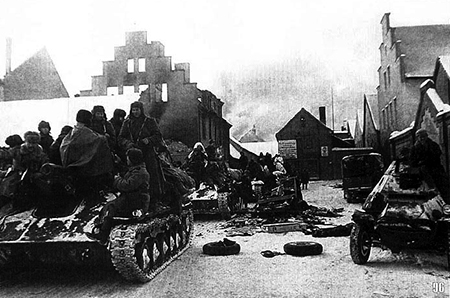
Although the enemy was already at the north-eastern border of the Wehlau district on January 20, there was still no order to evacuate the district's population. However, the Landrat of the Schloßberg (now Dobrovolsk) district, Bredow, probably at his own risk, gave the order to evacuate the inhabitants of his district. It can be assumed that the inhabitants of Plibischken (now Glushkovo) and Groß-Schirrau (now Dalnee) also joined them (both of these settlements were part of the Wehlau district and were located in its eastern part. - admin ), since the roar of battle was getting closer, and the retreating soldiers advised an urgent flight to the west. For some residents, it was already too late to flee.
Sunday, January 21st, was a black day for the residents of Wehlau. Since January 19th, an ever-increasing number of refugees from the northeast had filled the narrow streets of the city. According to the Wehrmacht command, Reichsstrasse 1 (the main highway of East Prussia. — admin ) had to be free for the movement of troops, so the main route for the flow of refugees became the direction to Allenburg (now Druzhba) and then to Friedland (now Pravdinsk). Convoys with refugees were concentrated in the meadow of Schanze, where the horse market was usually held . On Sunday morning, there was still no order to begin the evacuation of the residents of the district. And only when the enemy captured Plibischken and Gross-Schirrau, the order for the evacuation was received.
Although there is information that supposedly at 10 o'clock in the morning a message was broadcast over street loudspeakers that no danger threatened the civilian population. Nevertheless, soon after that the population was ordered to move south. But even after that some officials and employees of state services (for example, the post office) were ordered to continue to perform their duties. During the day, trains were running for those who did not have room on other means of transport.
The city was like an anthill that day. The streets were completely packed, especially many people gathered at the bridge over the Alle . There were almost no soldiers to be seen, only a few sappers were preparing the railway bridge for demolition.
It was not a quiet farewell to the beloved homeland, but a hasty gathering of the most necessary things and a feverish search for an opportunity to leave. At noon, the train departed for Königsberg on schedule. Hundreds of people still remained on the platform, eager to leave for the provincial capital. At the urgent request of the district leader of Strehlau, an additional freight train was allocated, which took away those waiting late in the evening. Chancellery employees and officials prepared documents for evacuation and placed them on cars for further removal. The secret archives of the district were burned on the night of January 20-21, 1945.
Superintendent (head of the Lutheran church in the district. — admin ) Zachau held the last service in the old parish church on Sunday afternoon. He also sang the last rites in the cemetery chapel for the six deceased — mostly refugees — who had found their last refuge in their native land. Zachau himself was unable to leave the city. He was taken prisoner by the Russians, from which he returned in 1946.
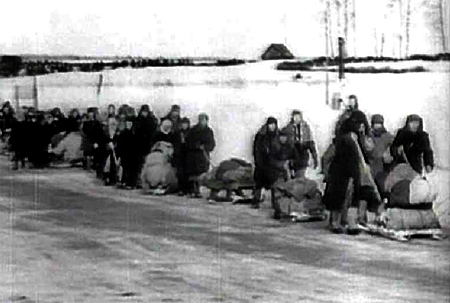
Meanwhile, permission to evacuate was also given for other settlements in the district, in most cases at the last minute and for many residents too late. In Allenburg, the order to evacuate was received on Sunday, January 21, at around 6 p.m. Mayor Moeller left his home town in the morning hours of January 22.
Mechanic Ewert reports on how the evacuation of the population from Tapiau took place:
"On the evening of January 21, the order to evacuate the entire city was given. On Monday, the 22nd, the streets were filled with refugees, carts, Wehrmacht vehicles and artillery pieces. The psychiatric hospital, where 300 patients remained, was also evacuated in a hurry. Since there were no vehicles or trains, everyone - including the sick and wounded - walked to Königsberg, where only about 100 men and 30 women made it."
The district committee promised to provide the residents of Taplacken (now Talpaki) with trucks. Refugees with hand luggage waited on the side of the road on the empty Reichsstrasse 1. Despite waiting for many hours, there was no transport, and the cannonade of battle was heard getting closer. Finally, in the evening, Wehrmacht trucks appeared, moving from Insterburg. In great haste (since the Russians were literally following them on their heels), they took only people, while all the things were abandoned on the side of the road. In general, it should be noted that the Wehrmacht tried to help the refugees as much as it could, and that in view of the complete lack of will on the part of the party leadership, without this help the catastrophe would have been even greater.
Residents of Gross Plauen received permission to evacuate only on January 22.
The abandoned cattle were fed for the last time and then released. During the last days and nights before the evacuation, the inhabitants buried many valuables, which the Russians later proved to be great at finding.
Not everyone managed to escape. The roads were so clogged that the journey from Wehlau to Allenburg (15 km) took 20 hours. The situation was even worse north of Pregel, where Reichsstrasse 1 from Tapiau towards Königsberg was still reserved for the Wehrmacht.
If the order for evacuation had been given even one day earlier and all roads had been allowed to be used, how much trouble and grief could have been avoided! All the blame for this lies on the conscience of Gauleiter Koch. And he later boasted that he had ensured the evacuation to the Frische Haff and to the Baltic Sea of hundreds of thousands of residents of East Prussia entrusted to him.
But let's return to the events in the Wehlau district.

In the north, on January 22, the Russians struck in several places and broke through to Deima, which became a natural barrier for them. As a precaution, the ice was broken by an icebreaker, making it impossible for heavy equipment to cross the river.
Already on January 22 – at about 9 p.m. – the Russian advance detachment occupied Klein-Schleuse (now the eastern outskirts of Gvardeysk), but was thrown back beyond the Deima. On the western bank of the Deima, the Volkssturm battalion from Tapiau and separate Wehrmacht units, together with the city police, tried to hold the line in fortified bunkers. The Volkssturm battalion from Tapiau was obviously not as well organized as the similar battalion in Wehlau. Many men were absent at the decisive moment, having been sent home to help their families evacuate. In addition, there was a lack of heavy weapons to repel tank attacks.
In 1914, the front along the Deima could be held for weeks with just a few Landsturm battalions from the Königsberg reserve. This time, however, the enemy crossed the Deima on the move.
Meanwhile, the Russian troops attacked Wehlau with superior forces. The Russian infantry first managed to approach the city from the east, south of Pregel, in the first half of the day on January 22 (Monday). The district administration, town hall and post office began to evacuate only when the advancing enemy troops became visible from the towers of the town hall and the church.
According to the head of the Strehlau district office, on the morning of January 22 between 9 and 9:30 a.m. he was still giving final instructions by telephone to employees of some institutions in Wehlau.
It is difficult to determine how powerful the enemy's attack was. However, it is obvious that they managed to destroy the sapper team near the bridge over the Pregel: they were probably expecting the enemy from the north, so the bridge was not blown up and was free for tanks to pass through. At the same time, the railway bridge was blown up, as was the temporary bridge over the Alle, which had existed for only one day.
It is said that during the day there was fierce street fighting in Wehlau, but although the enemy was temporarily driven out of the city, the attack was soon repeated. What units were involved in the battle and how the battle for Wehlau proceeded is not known in detail.
The 31st Panzer Regiment of the 5th Panzer Division under Colonel Hoppe and the shock group of Colonel Knebel were probably involved in the fighting south of Wehlau. They were tasked with delaying the advance of the Russian troops between Wehlau and Tapiau. The defending German units included personnel from the training school of the 3rd Panzer Army from Tapiau, service units and the Volkssturm.
Wehlau could not resist the ever-increasing onslaught of Russian troops and probably finally fell by the evening of January 22.
The old town was heavily damaged in the fighting. It is reported that about 50 civilians remained in the town, hiding in the church.
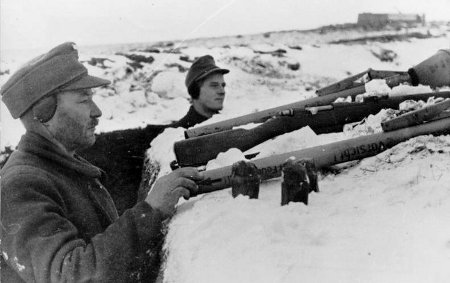
On January 22-23, the enemy managed to launch powerful attacks east of Alle in a southerly direction in the area of Koppershagen (no longer in existence) against the retreating units of the 26th Army Corps and the "Hermann Goering" parachute tank corps. A strike was also launched in a westerly direction south of Pregel, and on the evening of January 23, the enemy reached the Tapiau railway station. Here, apparently, a fierce battle with tanks took place, the details of which, however, are not known.
On January 24, the battles on the outskirts of Tapiau, which our weak, hastily assembled troops conducted against the enemy's many times superior forces, continued. So far, the attacks had been repelled. The road Mulden (Mulden, now Perevalovo) - Krugdorf (Krugdorf, no longer exists) - Allenburg was used for the retreat of units of the 26th Army Corps - the 1st and 56th Infantry Divisions, the remnants of the 349th and 549th People's Grenadier Divisions, as well as the 2nd Parachute Tank Division of the Hermann Goering Corps. At the same time, the bridges over the Alle in Allenburg and Leißienen (now Rodniki), as well as the defense line along the Masurian Canal remained in our hands.
However, on this day the enemy attacked on the front section south of Allenburg and the city was lost after a fierce battle. Probably at the last moment both bridges over the Alle were blown up. It is reported that Laissinen was occupied by the enemy on the evening of January 23, but on the 24th it was fought off three times by Wehrmacht troops and Volkssturm from the east, from the direction of Paterswalde (now Bolshaya Polyana). However, this information is debatable. Just like the reports that individual enemy tanks appeared to the west of Paterswalde in the afternoon of January 22, and in the evening they were already east of Groß-Engelau (now Demyanovka ).
The area suffered significant destruction as a result of the fighting.
On the morning of January 24, Colonel Knebel personally led a counterattack in the Tapiau railway station area. Thanks to the actions of his group, the station was liberated. Later, on the road Romau (now Rovnoe) - Sielacken (now non-existent, east of Romau) his armored personnel carrier was hit, and Knebel himself was mortally wounded.
From the award nomination:
"The Lion of Wehlau
Führer's Headquarters, February 1945.
The Führer nominated the commander of the army military school, Colonel Knebel, for the award of oak leaves to the Knight's Cross - the 744th Wehrmacht soldier to be awarded this award.
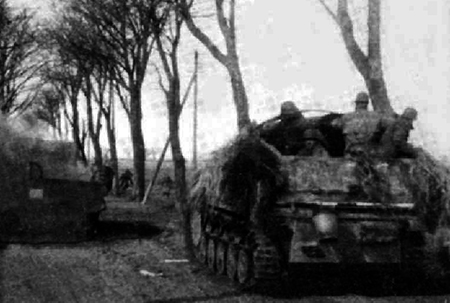
In mid-January 1945, Colonel Knebel, being the commandant of the settlement of Schillen, located on the Insterburg-Tilsit railway line, led security units and soldiers of the convoy and repelled enemy attacks until the order to retreat was given.
Four days later, he and a Volkssturm battalion and security units fought defensive battles for several days on the Wehlau-Tapiau line and helped to hold the front between the Masurian Lakes and the Curonian Lagoon.”
After Knebel's wounding, Captain Walter took over command of the strike group.
The front along the Deima was overturned on January 24. Fierce battles were still going on for Tapiau and Moterau (now Zabarje), but the enemy managed to break through the defense near Goldbach (now Slavinsk) and the way to the west became open.
Russian tanks passed through the north of the district without resistance and reached the road Wilmsdorf (no longer exists) - Gross-Udertal (now Demidovo) - Stampelken (now Osinovka) on the southern edge of the Greibener Forst (now Golovensky Forest).
The enemy continuously attacked the defensive line along the Deima throughout January 25 and broke through it in several places. Only in the southern part of the district in the area of Gross-Engelau - Hanswalde (not existing) - Friedrichsdorf (not existing) was it possible to defend until January 26, while Friedland was lost only on January 28.
According to the official census of 17 May 1939, 50,236 people lived in the Wehlau district. As a result of long and painstaking work, we have managed to establish the fate of 40,138 people, although their whereabouts are not always clear in detail. According to the calculations of the Federal Ministry of Displaced Persons, approximately 250,000 to 300,000 people remained in the Soviet part of East Prussia, including Königsberg. Obviously, several thousand residents of the Wehlau district must have remained among them. This includes not only those who were unable to leave the district, but also those who were able to evacuate, but whom the Russians then sent back. The fate of many of them is shrouded in darkness.
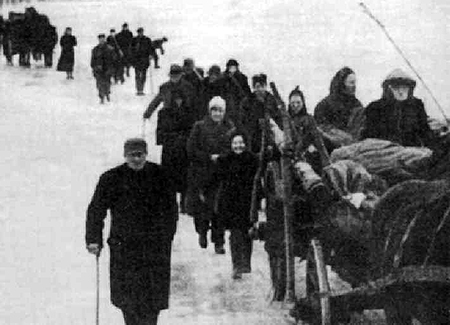
P.S.
Firstly, Kurt Dickert in his descriptions of the events that took place seems to be a person who is not very familiar with the real situation that developed in the Wehlau district at the beginning of 1945. Such reservations as “probably”, “possibly”, “according to unconfirmed information”, etc. are often encountered. In this regard, the descriptions of the Soviet participants in the events, given in the first part of the study (Battle for Wehlau), seem more convincing.
Secondly, in general, both the chronology and many details coincide with the recollections of Soviet participants.
Thirdly, Kurt Dickert confirms that there was a fierce battle for Wehlau and the city centre was destroyed.
Fourthly, the fate of Colonel Knebel and his strike group became clearer, although questions remained. In particular, why did he end up as the commandant of Schillen, if by that time he was already the commander of the school in Tapiau? Or was he appointed to the position of commander after he retreated from Schillen? But then he only held this position for a few days (on January 18 there was a breakthrough of Soviet tanks near Schillen, on January 19 the quartermaster of the 3rd tank army was temporarily stationed in the Tapiau barracks, and already on January 24 Knebel was mortally wounded). And the nickname "Lion from Wehlau" was given to Knebel in the presentation for the award, most likely based on the name of the district in which he fought at the time.
(photos from the website of the Fellowship of the Wehlau District and from the forum kenig.org)
